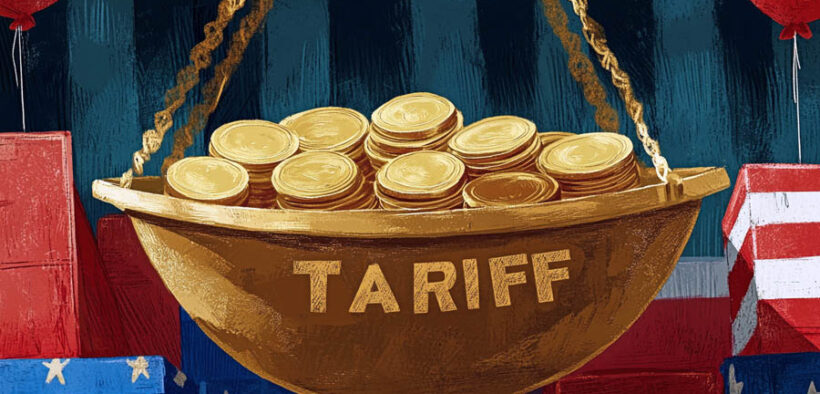Insight: How small businesses can protect against tariff war uncertainty

Raúl Burgos shares strategies for resilience and growth in an unpredictable trade environment.
The ongoing, unpredictable and ever-changing tariff scenario in the United States is sending ripples through businesses of all sizes, but small enterprises are particularly vulnerable; Puerto Rico is no exception.
Unlike large corporations, small businesses often lack the financial cushion, operational structure and supply chain flexibility to absorb sudden cost increases. While trade disputes are unpredictable, proactive planning and quick execution can help businesses navigate the turbulence.
For decades, business owners in Latin America have learned to live and navigate uncertainty and economic turbulence through planning, quick action and what Brazilians call “ginga” — a flexible swaying that applies to dance, football and business uncertainties.
Drawing from our experiences in Latin America, here are some of the best strategies for protecting your business from the impact of unpredictable economic scenarios such as a global tariff exchange:
1. Diversify your supplier base: If your business relies on imports from a country affected by tariffs, now is the time to explore alternative suppliers. Consider sourcing from different regions with lower tariff risks or even domestic manufacturers. This not only reduces dependency on a single supply chain but also provides leverage in price negotiations. Sourcing new international suppliers can also lead to savings through lower prices and/or a more favorable currency exchange.
2. Lock in long-term contracts: If you anticipate further tariff increases, negotiate long-term agreements with current suppliers to lock in prices. While this approach requires careful financial planning, it can offer cost predictability and protection from market volatility.
3. Explore tariff exemptions and trade programs: Many businesses remain unaware of tariff exemption programs that could reduce their financial burden. In our case, as part of the U.S., investigate whether your business qualifies for exemptions under programs such as the U.S.-Mexico-Canada Agreement (USMCA) or tariff exclusion requests offered by the U.S. Trade Representative agencies.
4. Optimize your pricing strategy: Rather than absorbing all the increased costs, consider gradually adjusting prices while maintaining customer loyalty. Transparency with customers about why price adjustments are necessary can help mitigate backlash. Additionally, offering bulk purchasing discounts or subscription models may encourage customers to commit despite price increases.
5. Strengthen domestic partnerships: If tariffs are disrupting international supply chains, consider forming partnerships with domestic suppliers and manufacturers. Government incentives for businesses that source materials domestically can also help offset costs.
6. Focus on operational efficiency: Now more than ever, cutting waste and improving efficiency should be a priority. Evaluate your business operations to identify areas for cost reduction, whether through automation, streamlining logistics, or renegotiating lease and utility expenses. Look at your distribution/sales structure and focus on the most cost-effective channel to deliver your product.
7. Stay informed and engage in advocacy: Tariff policies can shift rapidly based on political and economic developments. Staying informed about policy changes allows businesses to adapt quickly. Additionally, small business owners should engage in local industry advocacy groups such as the Puerto Rico Chamber of Commerce, United Retailers Association (CUD, in Spanish), and Hecho en Puerto Rico, and communicate with policymakers to ensure their voices are heard in trade discussions.
8. Consider strategic “pass-through” costs: In some cases, businesses can adjust product packaging, quantity or quality to align with new cost structures without losing customer appeal. Small adjustments in product offerings can help absorb higher costs while maintaining competitiveness.
9. Explore new markets: If tariffs limit competitiveness in certain regions, it may be time to explore new markets domestically or internationally. Expanding to untapped customer bases can help offset potential losses from tariff-related slowdowns. In our case, Latin America remains an “undiscovered country” for many import/export business opportunities.
10. Frontload inventory: If you anticipate tariffs to increase soon, consider front-loading inventory by purchasing and stocking up on key materials or products before the new tariffs take effect. This strategy can help buffer against sudden price hikes and supply chain disruptions, providing your business with greater flexibility and cost stability.
While small businesses cannot control government trade policies, they can take proactive steps to minimize risks and seize new opportunities. With a combination of strategic sourcing, pricing adjustments and operational efficiencies, small businesses can weather the storm of a tariff war and emerge stronger.
As uncertainty continues, resilience and adaptability will define which businesses thrive and which struggle. Now is the time to prepare, innovate and take control of the future.

Raúl Burgos, president and managing partner at Global 1080 Business Solutions and G1080 Consulting. For more information, email [email protected].












